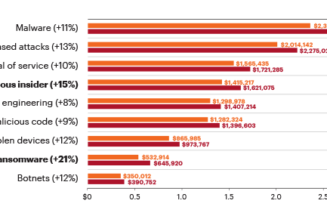Zoom is planning to roll out additional security features this week in order to prevent the highly unwelcome ‘zoombombing’ that has plagued the platform in recent months.
This comes after the app suffered under the microscope of cybersecurity experts and even legal authorities as its explosion in popularity exposed its steep and cavernous holes in safety and security.
One especially damning report by The Intercept stated that Zoom’s meetings weren’t encrypted end-to-end as they had advertised. Instead, the company offers “Transport Encryption”, a form that protects content from external attackers, but not from Zoom itself – despite what Zoom says.
Zoom could use this lack of encryption to view your meetings. Another issue users of the app are having, is when trolls bombard their company meetings with, usually, pornographic material in a means to elicit reactions from those present. This practice is known as Zoombombing.
Trolls and cybercrooks can gain access to meetings for Zoombombing in a very simple way – they merely have to search through Zoom.us URLs that can be found with a quick Google search.
With all of the problems the app was facing mounting, Zoom’s CEO Eric Yuan publically apologised. Promising users that the company would double their efforts in security and privacy in the coming months. Now, it seems like the company could be making good on that promise.
New Security Features
Announced in a blog post, Zoom is preparing to unleash a bevvy of features meant to balm their security woes. Beginning May 9, Basic Zoom accounts will be updated with the following changes:
- Passwords will be required for all meetings, including new meetings, previously scheduled meetings, and those using PMI (Personal Meeting IDs)
- Waiting Rooms for PMI will be turned on by default
- Screen-sharing privileges will be Host-Only by default
With waiting rooms enabled, meeting hosts will now be required to approve of participants before they can enter a video meeting – effectively putting another barrier against Zoombombing and other harmful content.
The company also produced a series of recommendations for users to protect all meetings, especially if you are using a PMI or personal link:
- Require a meeting password
- Disable join before host
- Enable waiting room
- Require authenticated users to join
- Lock the meeting after it’s started
- Mute participants on entry
Users can enable any of these features by going to Settings > Meetings > Personal Meeting Room in your Zoom account.
“These enhanced protections will help enable our free users to securely meet right out of the box,” Zoom writes.
For more ways to protect yourself when using Zoom, click here.
Edited by Luis Monzon
Follow Luis Monzon on Twitter
Follow IT News Africa on Twitter









